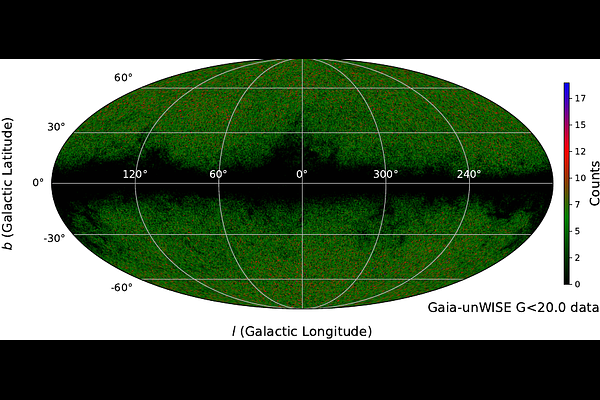Revealing a transitional epoch of large-scale cosmic anisotropy in the quasar distribution

Revealing a transitional epoch of large-scale cosmic anisotropy in the quasar distribution
Amit Mondal, Biswajit Pandey, Krishna Ghosh
AbstractThe Cosmological Principle posits that the Universe is isotropic on the largest scales. While widely supported, this foundational assumption remains testable. We analyse the angular distribution of over one million quasars from the Gaia-unWISE catalogue using Renyi entropy, a multiscale statistical measure sensitive to higher-order clustering. Dividing the sample into three redshift bins, we find that both the low- and high-redshift distributions are statistically consistent with isotropy. However, at intermediate redshift ($1 \leq z < 2.2$), we detect a statistically significant and scale-dependent anisotropy that persists under stringent masking, suggesting a physical origin. We interpret this as evidence for a transitional epoch in cosmic history, during which large-scale structures such as superclusters became prominent before their growth was gradually damped by the onset of accelerated expansion. These findings position Renyi entropy as a powerful probe of cosmic evolution and highlight the potential thermodynamic links between structure formation, entropy dissipation, and the emergence of large-scale isotropy.